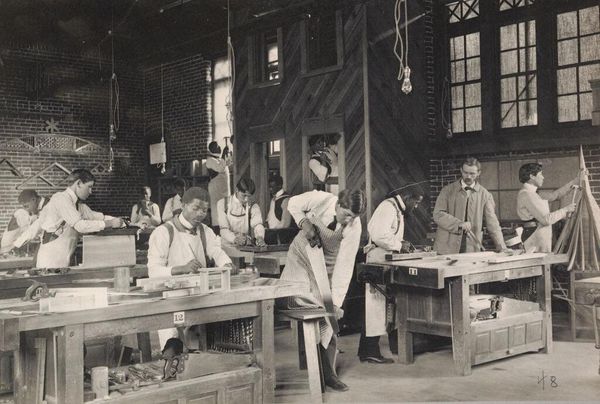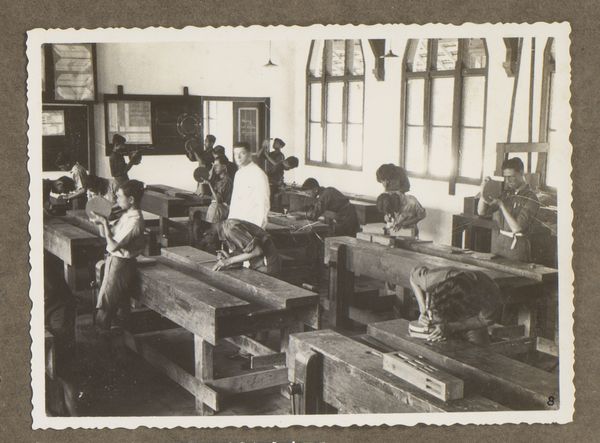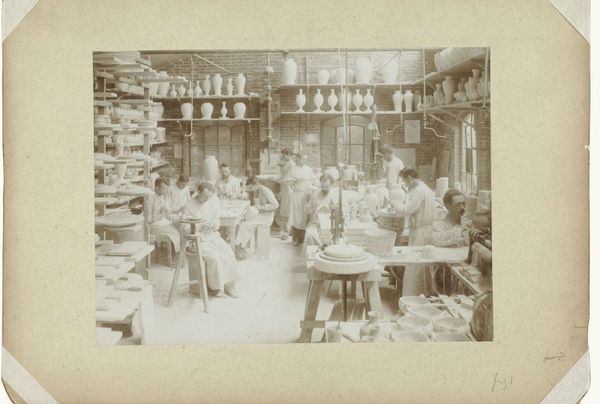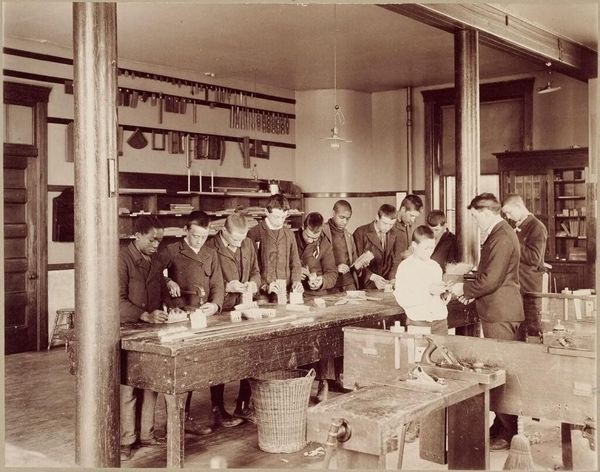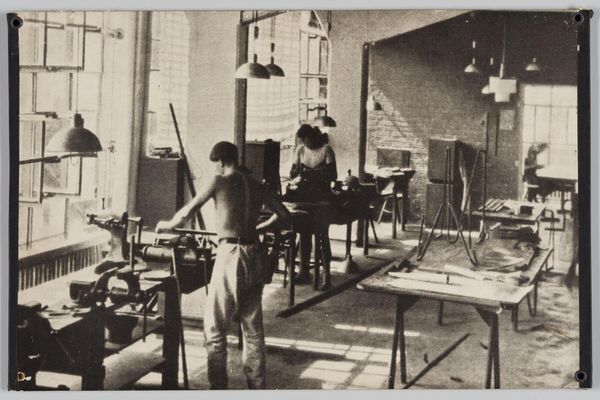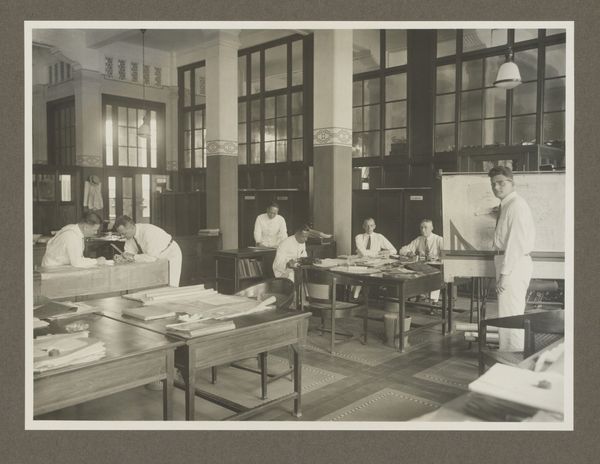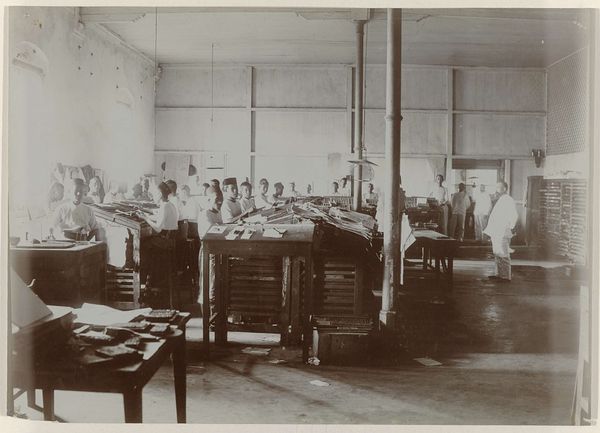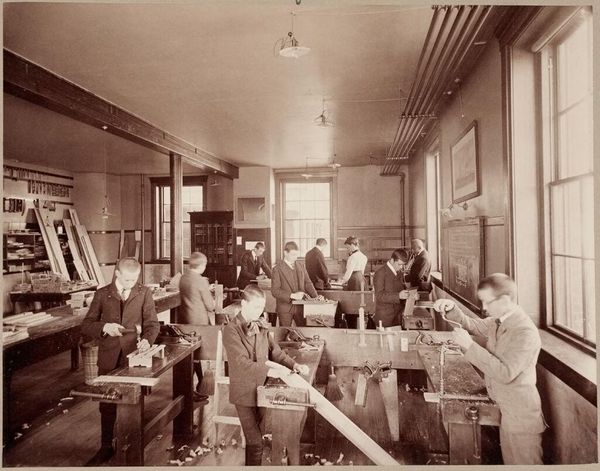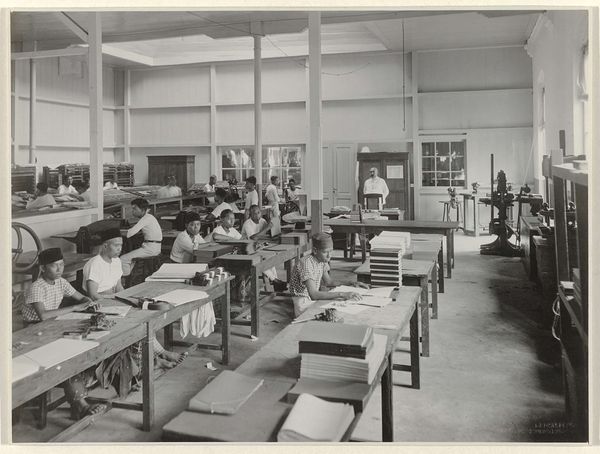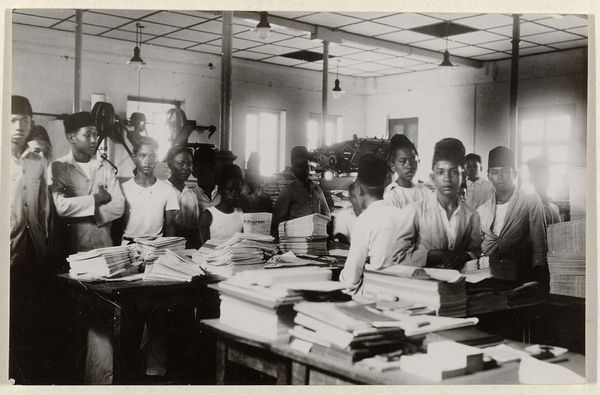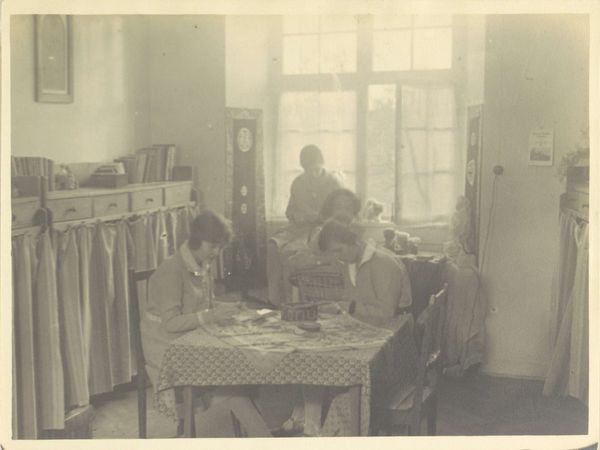
photography, gelatin-silver-print, wood
#
german-expressionism
#
photography
#
historical photography
#
gelatin-silver-print
#
wood
#
genre-painting
#
realism
Dimensions: height 179 mm, width 238 mm
Copyright: Rijks Museum: Open Domain
Editor: This gelatin-silver print from around 1929, titled "Leerlingen van Schule Schloss Salem assisteren een timmerman," captures a scene of students assisting a carpenter. There's a tangible sense of labor and focus. What's your interpretation of this piece? Curator: I see a powerful statement about the means of production and the blurring lines between art and craft. The choice of photography as a medium is critical. It's not a painting romanticizing labor, but a seemingly objective document of it. This was a period of immense social change; photography allowed the working class to become visible, documenting labor within an educational context, perhaps. Editor: It is interesting to think about "making visible" here. How does that challenge the notion of "high art"? Curator: Traditionally, “high art” distanced itself from manual labor. Photography, particularly in this unglamorous depiction, challenges that hierarchy. We're not seeing heroic figures but students learning a trade. Consider the tools, the workbench – these are the “materials” of this education. What were these students learning in particular at Salem, a boarding school, in the late 20s? What social class do they come from? What will they do after school? Those would be the questions I would try to address. Editor: That's fascinating. So you're suggesting that the very act of documenting this process, with attention to materials and social context, elevates it to a form of social commentary? Curator: Precisely. The image invites us to contemplate the value of labor, the skills being imparted, and the social implications of such vocational training. It asks us: Who benefits from this work? Who controls the means of production even in a school environment? Editor: It's made me think about the inherent value in the materials themselves – the wood, the silver in the print – and the process of their transformation. Thank you! Curator: My pleasure. Looking at art through the lens of materiality always enriches our understanding.
Comments
No comments
Be the first to comment and join the conversation on the ultimate creative platform.
